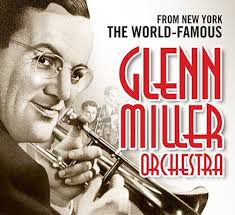 My wife said during the Memorial Day weekend, “Do you want to see Downton Abbey: A New Era?” We go to few enough movies that the answer is almost always YES.
My wife said during the Memorial Day weekend, “Do you want to see Downton Abbey: A New Era?” We go to few enough movies that the answer is almost always YES.
So we got in the car to head to the Spectrum Theatre when she noticed that it was also showing at the nearby Madison Theatre. Should we go there? Nah, the Spectrum popcorn is better, and there’s more room at the Spectrum.
As it turned out, there were more folks at a Friday matinee than I have seen in a long time. Every row on both sides had at least a party of two, and often more, from the back to the fourth row from the front, where we sat.
As I noted in my review of the first film, I had/have never seen a full episode of the TV show, even though the DVDs are in the house. An imperfect analogy: it would be like watching the last two Avengers movies without having seen any of the other films in the Marvel Cinematic Universe. You might get the gist of the story, but pieces would be missing.
What is necessary
So I’m responding to what I know. There were two basic plotlines taking place in the early 1930s. One involved an offer from a company to make a film at the mansion. While the initial offer was rejected outright by Robert Grantham (Hugh Bonneville), others, notably Lady Mary (Michelle Dockery) noted that the building is in disrepair, including a leaky roof, and that the family really could use the infusion of cash.
Fortunately, some of the family had another place to go, to the south of France, to a villa given to the Countess of Grantham (Maggie Smith) back in the 1860s, by a gentleman of her brief acquaintance, much to the dismay of that man’s widow. Although he wasn’t really needed, Mr. Carson (Jim Carter) came along to help the family.
I enjoyed the film – and my wife even more so – in meeting up with the familiar cast. In particular, the issue of making a silent film when the talkies were starting to take hold was a lot of fun. Ah, that’s Hugh Dancy as the film director; isn’t he n the new Law and Order?
The downstairs people – the staff, in general, I find more interested than most of the “passive income earners.” And I think their stories were more compelling. I laughed aloud at least a half dozen times, especially at what I should have anticipated but did not.
I often look at negative reviews, though 85% positive on Rotten Tomatoes. There was a bit of “it’s not cinematic enough” and “another (longer) episode of the show.” Since I didn’t watch the series, it’s impossible for me to assess those aspects. But having seen too many movies on television over the past two years, I’m having a bit more difficulty figuring out what that even means anymore.

 In Joel Whitburn’s A Century of Pop Music, an interesting note. “The recording industry enjoyed booming success during the early 1940s until the era’s dominant big bands were stilled on August 1, 1942, when the American Federation of Musicians joined in a ban on recording due to a dispute over musicians’ royalties.
In Joel Whitburn’s A Century of Pop Music, an interesting note. “The recording industry enjoyed booming success during the early 1940s until the era’s dominant big bands were stilled on August 1, 1942, when the American Federation of Musicians joined in a ban on recording due to a dispute over musicians’ royalties. If “Attica” is just a line you recognize from the movie
If “Attica” is just a line you recognize from the movie  When she co-hosted the Oscars recently,
When she co-hosted the Oscars recently,  Because of scheduling dictated in part by COVID, the Oscars and the Grammys were on successive weekends. I watched them both in 30-minute chunks while riding the stationary bicycle. So not in real time; I’m too busy for that.
Because of scheduling dictated in part by COVID, the Oscars and the Grammys were on successive weekends. I watched them both in 30-minute chunks while riding the stationary bicycle. So not in real time; I’m too busy for that.